7 Free Art Galleries in Ginza
These seven no-cost art venues offer fresh inspirations
One of the rewarding pleasures of roaming around Ginza is exploring its wide array of art and design galleries for free.
Embraced by a rich cultural history traced back to the Edo period, Ginza continues to nurture its artistic heritage through special shows ranging from traditional to modern art and design. Some galleries are housed inside luxury brand boutiques.
1. Pola Museum Annex
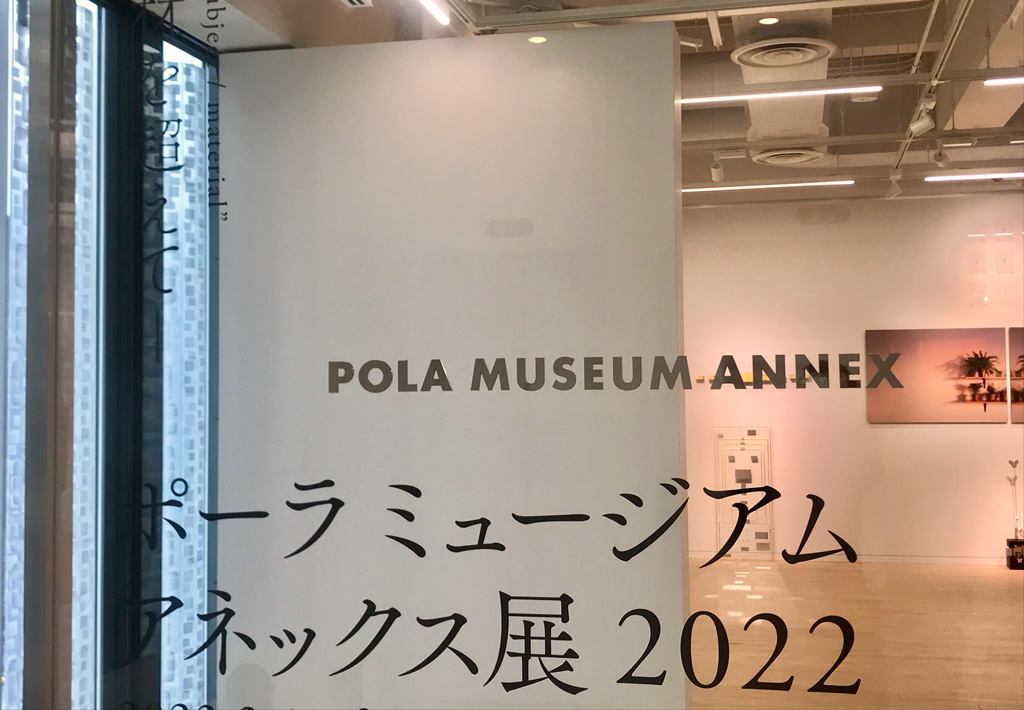 © Photo by Alma Reyes
© Photo by Alma Reyes
An extension of Pola Museum of Art in Hakone, Pola Museum Annex opened in 2009 and is part of Pola Orbis Holdings Company’s concept of delivering a message of inner beauty through art that can be enjoyed freely by the public throughout the year. The museum can be found on the third floor of the Pola Ginza building, located on Chuo Street alongside prestigious department stores and luxury boutiques.
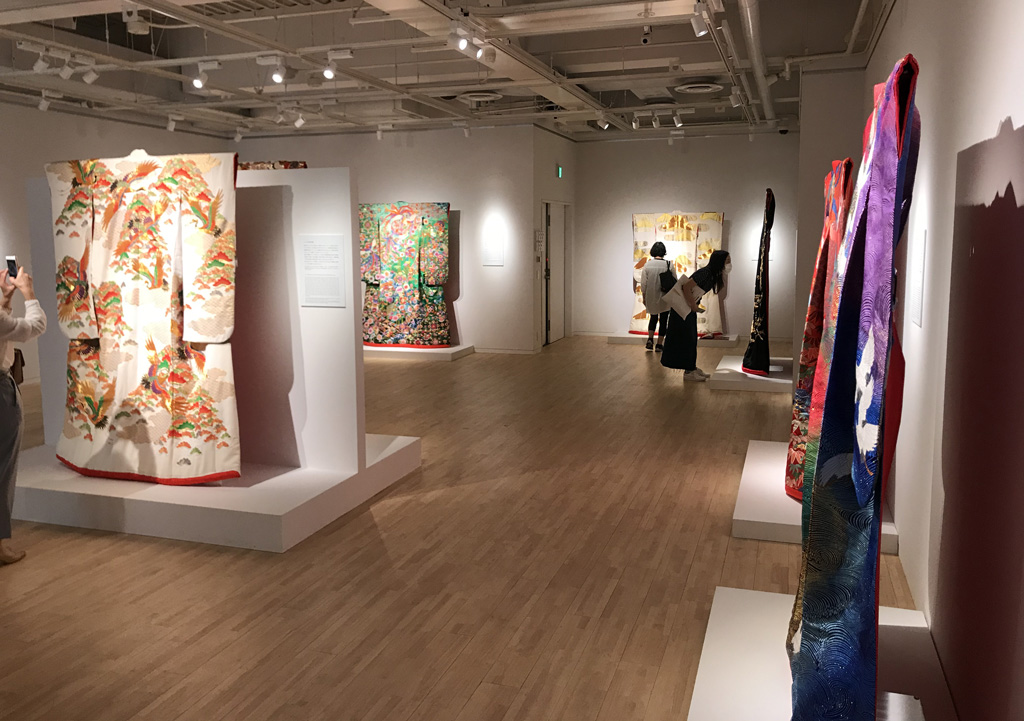 © Photo by Alma Reyes
© Photo by Alma ReyesWearing Art. Setsuko Wakatsuki’s ‘Uchikake’ collection” at the POLA exhibition.
The compact space showcases pieces by promising young artists and the Pola Collection of contemporary and traditional art in a spectrum of genres from paintings, sculptures, photography, objet d’art, fashion to installations. On the first floor is the cosmetic brand’s beauty salon.
Open: Daily from 11 a.m. to 8 p.m.
Access: Ginza-Itchome station, Exit 7 on Yurakucho Line; Ginza station, Exit A9 on Ginza, Hibiya, and Marunouchi Lines
2. Chanel Nexus Hall
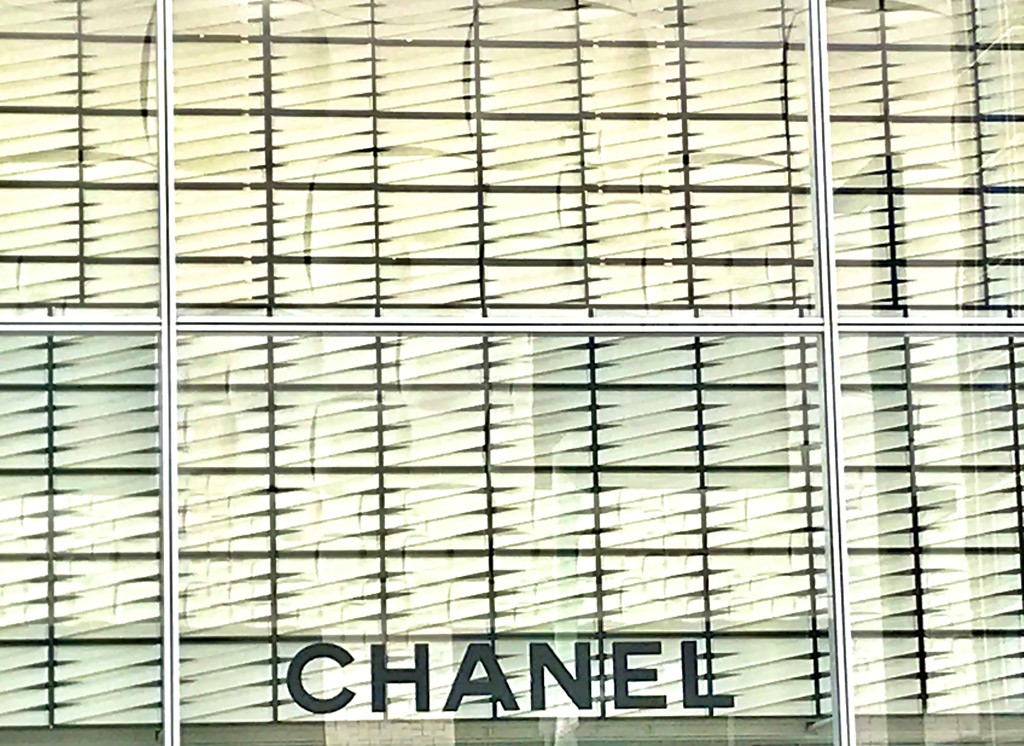 © Photo by Alma Reyes
© Photo by Alma Reyes
Just a few steps away from Pola Museum Annex on the same street, the second Chanel flagship store in Ginza was erected in 2004. The impressive 56-meter high glass wall building is enclosed in an aluminum block designed by acclaimed architect Peter Marino. In addition to the 1,300 square-meter shopping space, the French cuisine restaurant Beige Alain Ducasse can be found on the 10th floor and the Chanel Nexus Hall gallery on the fourth floor.
The hall hosts both art exhibitions and concerts periodically. Paintings, sculptures, photography and other media embody the creative spirit of founder Gabrielle Chanel. Some works are presented to the public for the first time.
Open: Mon-Fri 1 p.m. to 7:30 p.m., Sat 1 p.m. to 7 p.m. (Closed on Sun and public holidays)
Access: Ginza-Itchome station, Exit 8 on Yurakucho Line; Ginza station, Exit A13 on Ginza, Hibiya, and Marunouchi Lines
3. Ginza Six: The Club and Artglorieux
Close to the Ginza 4-chome intersection, the Ginza Six shopping mall replaced the historic Matsuzakaya department store in 2017. The strikingly innovative architecture was designed by Yoshio Taniguchi and its interiors are by French designer Gwenael Nicolas. Spanning a vast area of 47,000 square meters, the 12-story commercial facility advocates art and culture through a Noh theater and its beautifully landscaped roof garden. The main lobby is itself an art installation space that has displayed majestic works by Finnish designer Klaus Haapaniemi, artists Chiharu Shiota and Yayoi Kusama and other celebrated creators. The current installation Metamorphosis Garden by Kohei Nawa reveals floating clouds and the world of fauna and flora.
On the sixth floor inside the Tsutaya Books is The Club gallery. It presents artworks by international contemporary artists rarely seen in Japan. It hopes to build a bridge of cultural discovery between the East and West.
For an eclectic touch of the avant-garde and Japanese traditional arts, Artglorieux on the fifth floor abides by the concept of “finding lifelong treasures in Ginza.” The tunnel entrance leads to two exhibition rooms in a trapezoid shape. The floors are finished in seven colors to achieve a sense of depth and distance between the visitor and the artwork. The exhibits include paintings, lithographs and Ukiyo-e woodblock masterpieces.
Open: The Club: Daily from 11 a.m. to 7 p.m., Artglorieux: Daily from 10:30 a.m. to 8:30 p.m.
Access: Ginza Station, Exit A3 on Ginza, Hibiya, and Marunouchi Lines; Higashi Ginza Station, Exit A1 on Hibiya Line and Toei Subway Asakusa Line; Ginza-itchome Station, Exit 9 on Yurakucho Line
4. Shiseido Gallery
Further down Chuo Street is Ginza’s oldest art gallery opened in 1919. Shiseido Gallery boasts a five-meter high ceiling, the tallest exhibition hall in Ginza. The building construction, first led by architect Tatsuno Kingo in 1916, has made several transitions—especially after the Great Kanto earthquake in 1923 and World War II. Succeeding redevelopments were continued by architects Kenjiro Maeda in 1928, Yoshiro Taniguchi in 1963, Yoshinobu Ashihara in 1975 and finally by Ricardo Bofill in 2001.
Upholding its reputable status worldwide as a leading cosmetics and health product company for more than a century, Shiseido has been dedicating its art activities to the “ideal of discovering and creating new value.” The gallery is particularly known for the Tsubaki-kai artists group shows. The circle is composed of highly respected Japanese artists both in Japanese and Western art.
Open: Tue-Sun from 11 a.m. to 7 p.m. (Closed Mon)
Access: Ginza Station, Exit A2 on Ginza, Hibiya, and Marunouchi Lines; Shimbashi Station, Exit 1 on Ginza Line and JR Yamanote Line
5. Ginza Graphic Gallery
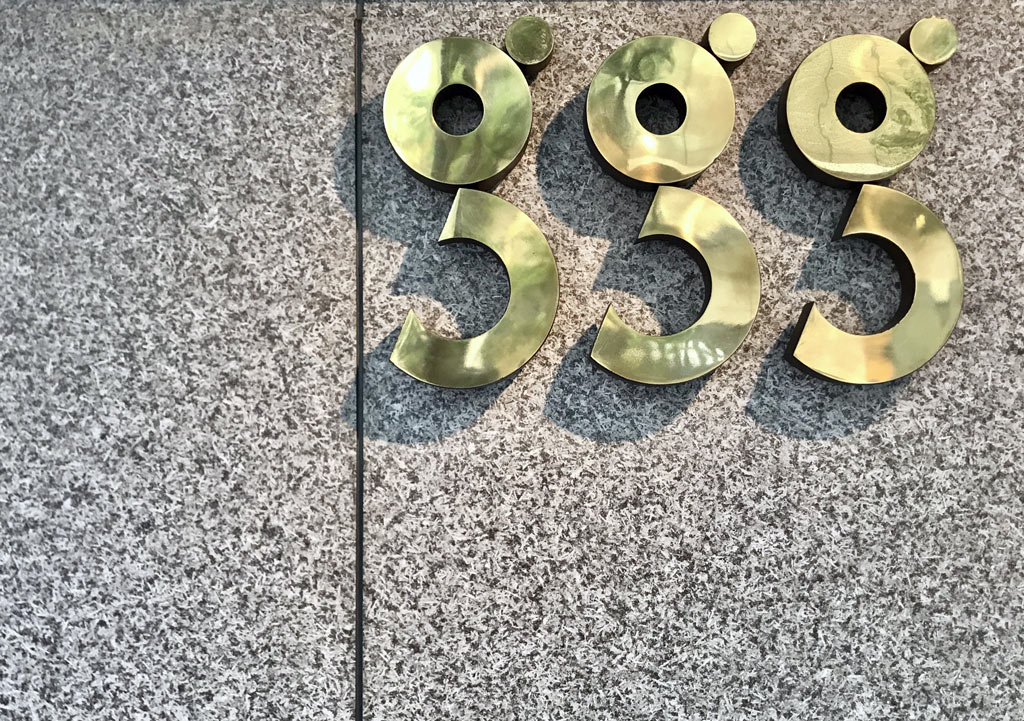 © Photo by Alma Reyes
© Photo by Alma Reyes
While most galleries around Ginza feature modern and traditional art, Ginza Graphic Gallery may be the only venue in the area that specializes in graphic design. Located along Kojunsha Street, two minutes on foot from Ginza Six, it was established in 1986 as part of Dai Nippon Printing Company’s cultural activities. The gallery, commonly called “ggg,” consists of primarily two exhibition spaces, on the ground floor and basement. The library and bookstore are found on the upper floor.
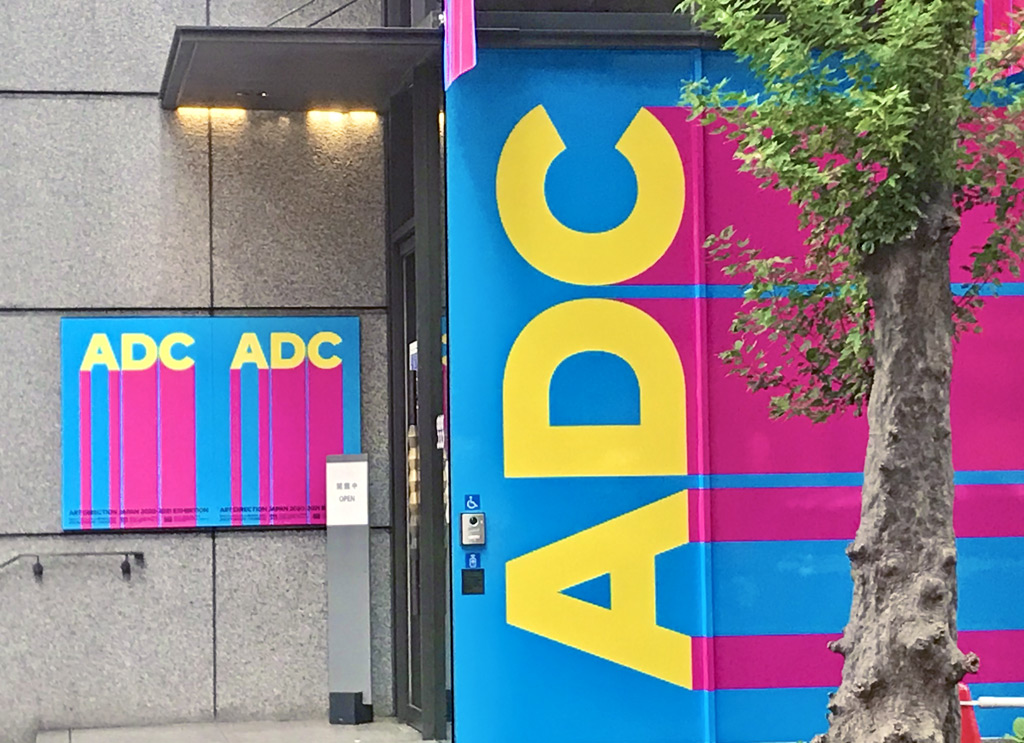 © Photo by Alma Reyes
© Photo by Alma ReyesArt Direction Japan 2020-2021 Exhibition
The exhibitions are held eight times a year covering posters, prints, book and magazine covers, and the gallery’s own publications gggBooks. The Tokyo Type Directors Club’s annual exhibition takes place here every year. Lectures and artists’ talk shows by prominent Japanese and foreign graphic designers are also conducted occasionally.
Open: Mon-Sat 11 a.m. to 7 p.m (Closed Sun and national holidays)
Access: Ginza Station, Exit A2 on Ginza, Hibiya, and Marunouchi Lines
6. Maison Hermès Ginza “Le Forum”
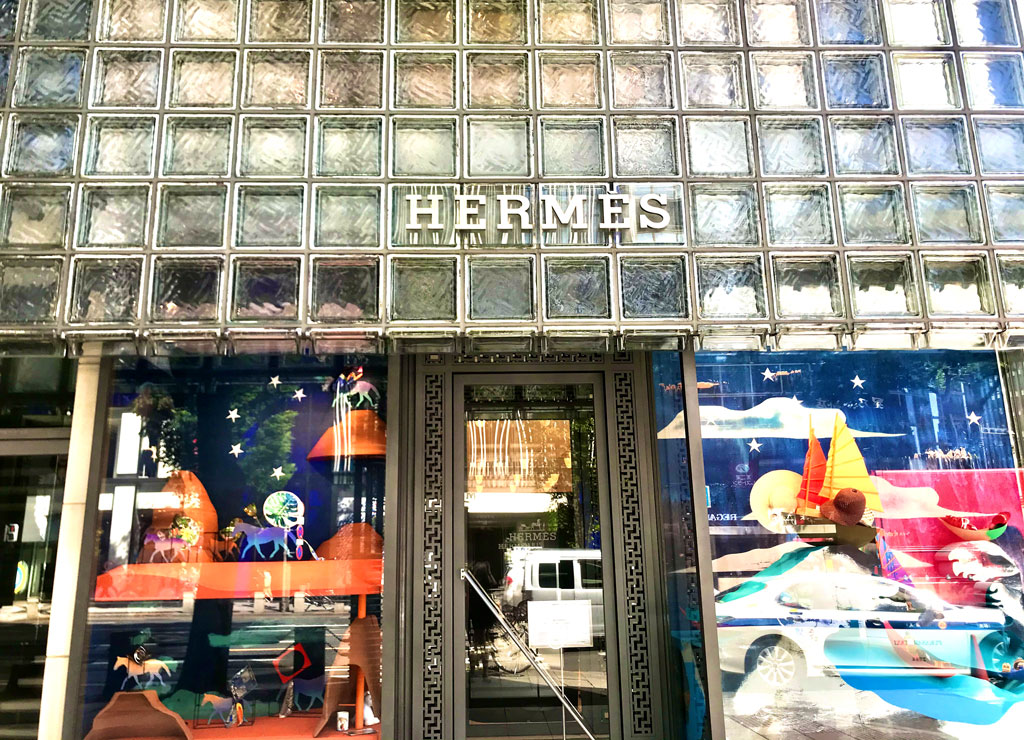 © Photo by Alma Reyes
© Photo by Alma ReyesTurning back towards Ginza station on Harumi-dori, one cannot miss the towering and slender 15-story jewel-like Maison Hermès boutique, just across from the Marunouchi Piccadilly landmark. Designed in 2001 by world-renowned architect Renzo Piano, the custom-fabricated glass block building allows soft light to filter through the interior and open up the space, while the high ceiling provides ideal depth for large installations.
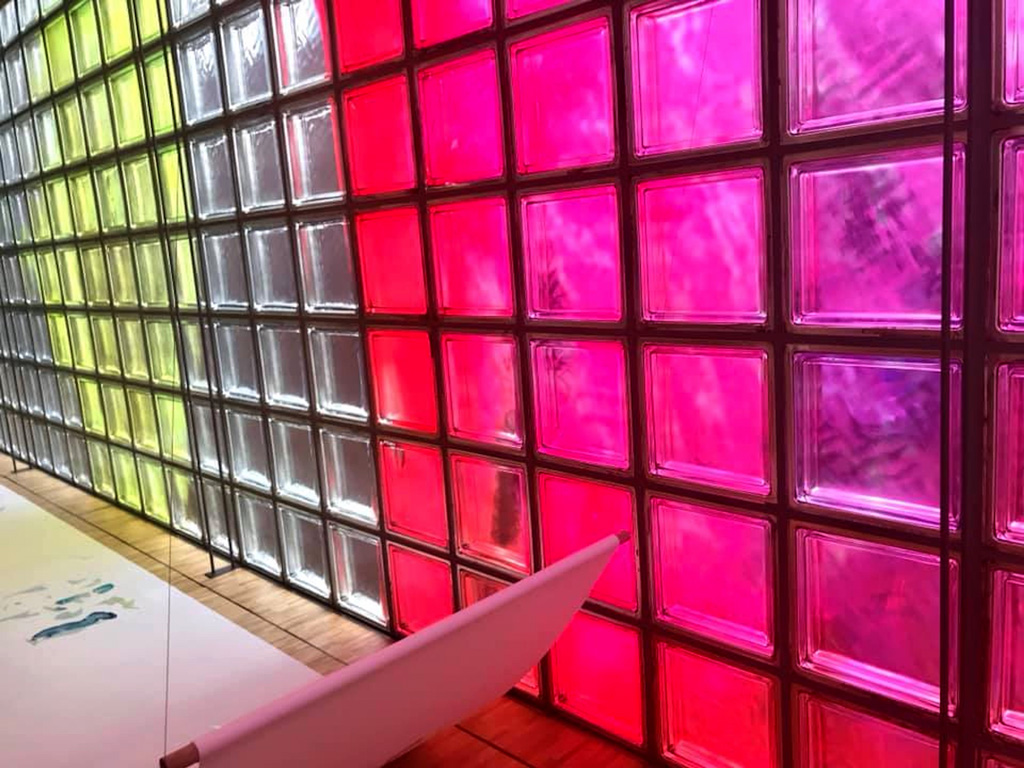 © Photo by Alma Reyes
© Photo by Alma ReyesThe Le Forum art space is located on the eighth floor. A corridor exhibit space extends on the ninth floor, overlooking the floor below. Organized by the Hermès Foundation, the gallery exhibits various projects related to art, technology, environment and education. The reservation-only mini-theater Le Studio is found on the 10th floor and features special rare films.
Open: Daily from 10 a.m. to 6 p.m.
Access: Ginza Station, Exit B7 on Ginza, Marunouchi and Hibiya Lines; Yurakucho Station, Hibiya Exit JR Yamanote and Keihin-Tohoku Lines
7. Atelier Muji Ginza
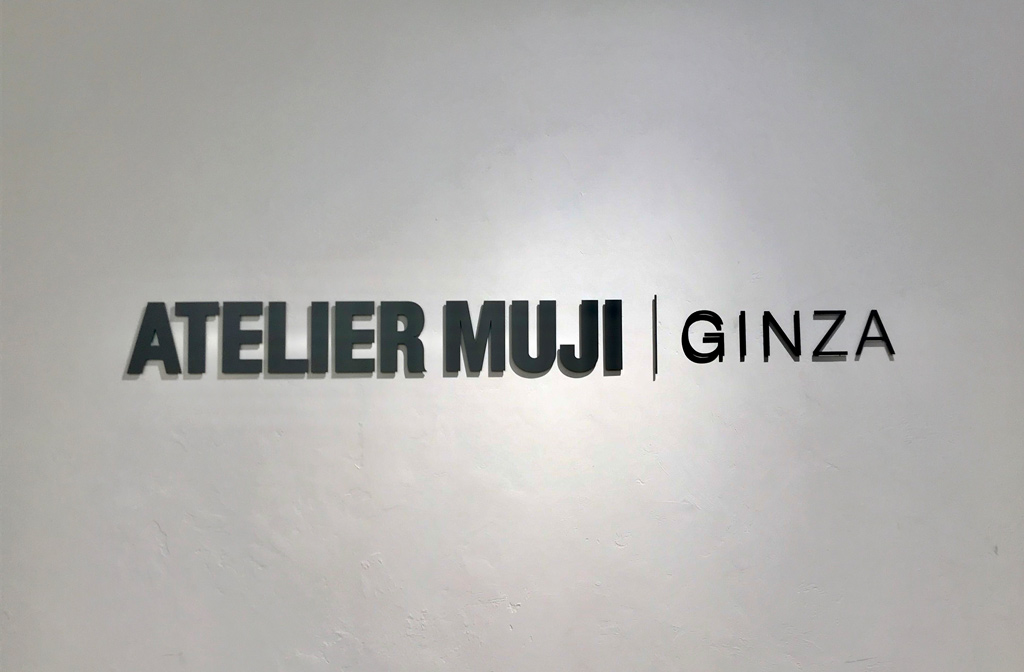 © Photo by Alma Reyes
© Photo by Alma ReyesAlong the lovely Namiki Street, the Muji shop makes for a leisurely day of shopping, gourmet and art. On the sixth floor, the small gallery holds three to four exhibitions in a year related to crafts and design. Apart from two exhibition nooks, the modern designed space consists of a salon with a bar counter where one can relax over drinks.
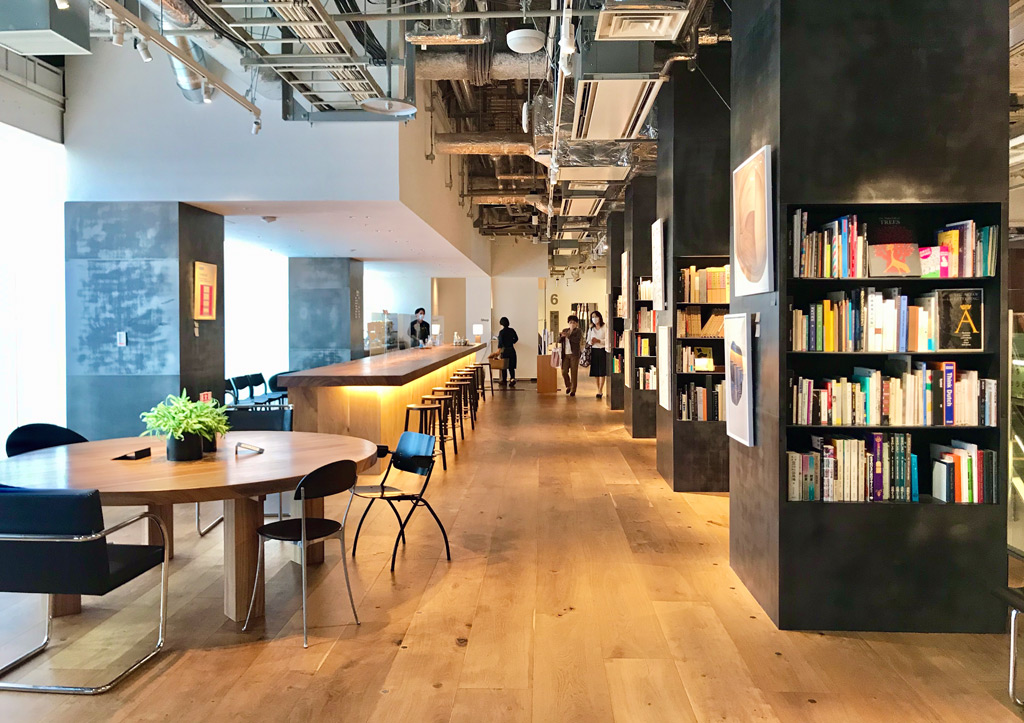 © Photo by Alma Reyes
© Photo by Alma ReyesOn the opposite side is a cozy library of specially selected art and design books. There is also a lounge area where various events and workshops are held and a gallery shop. Muji Hotel is adjacent to the gallery, combining culture with accommodation.
Open: Daily from 10 a.m. to 9 p.m.
Access: Ginza Station, Exit C8 on Ginza, Marunouchi and Hibiya Lines; Ginza-itchome Station, Exit 5 on Yurakucho Line; JR Yurakucho Station, Kyobashi exit
Some venues require advanced reservations, so be sure to check the websites for updated information.
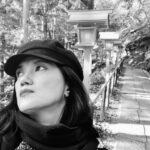
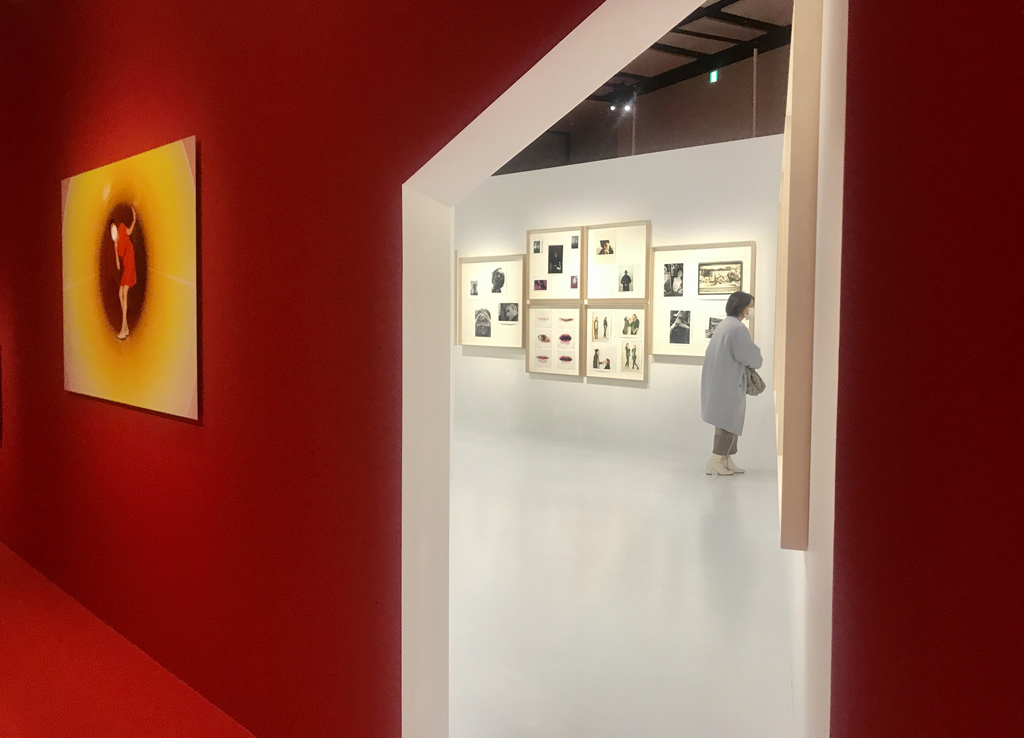
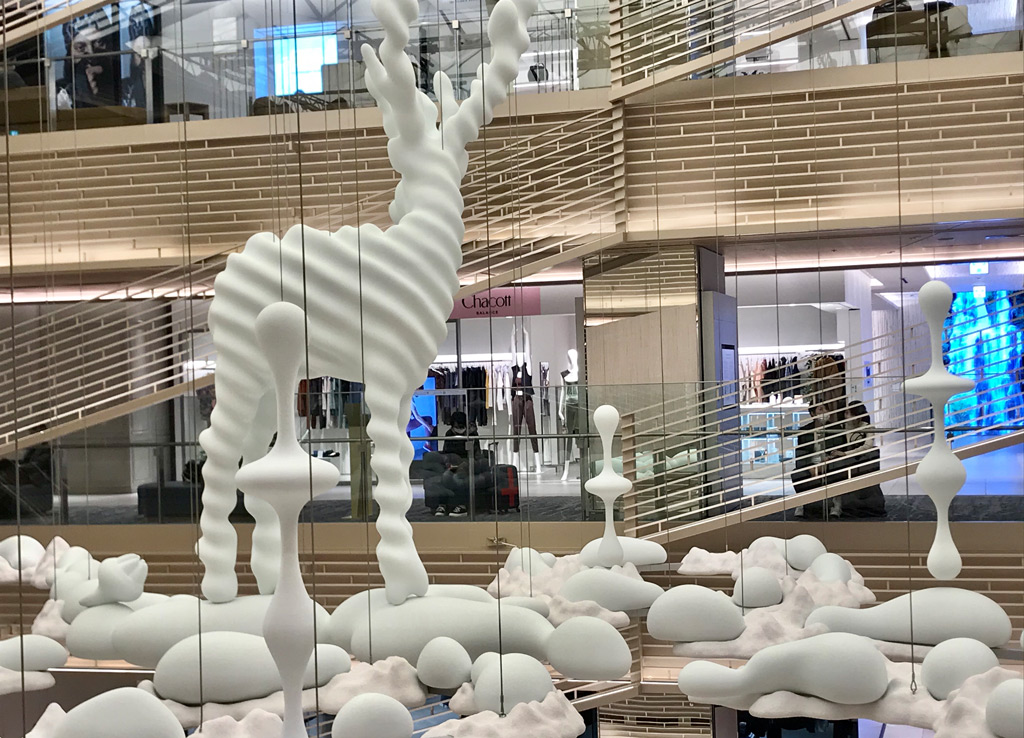
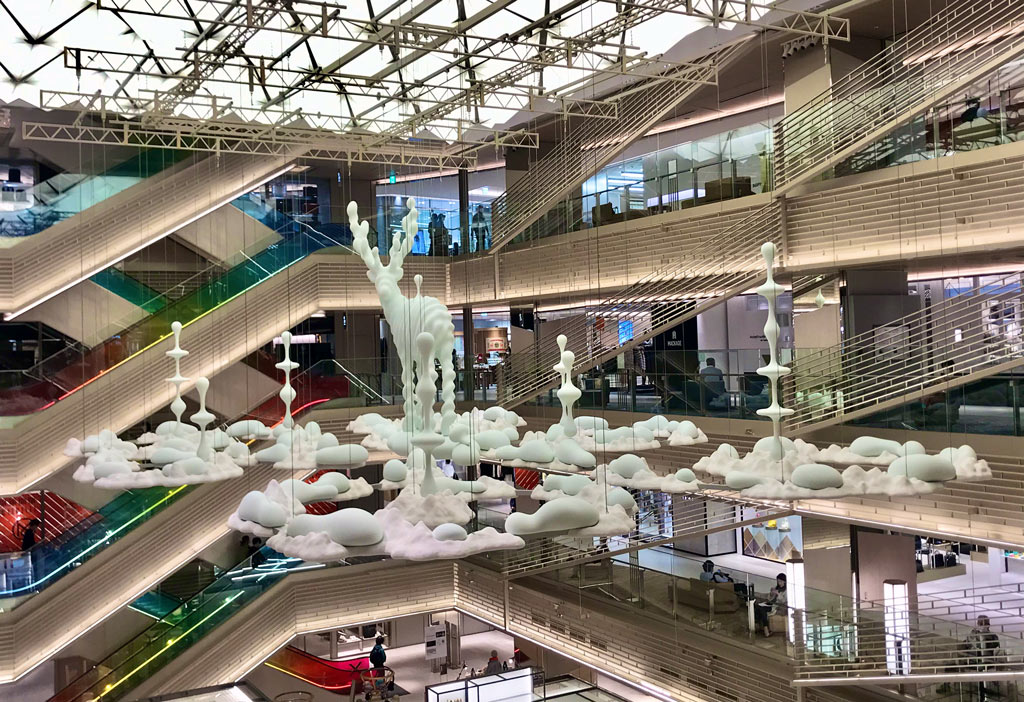
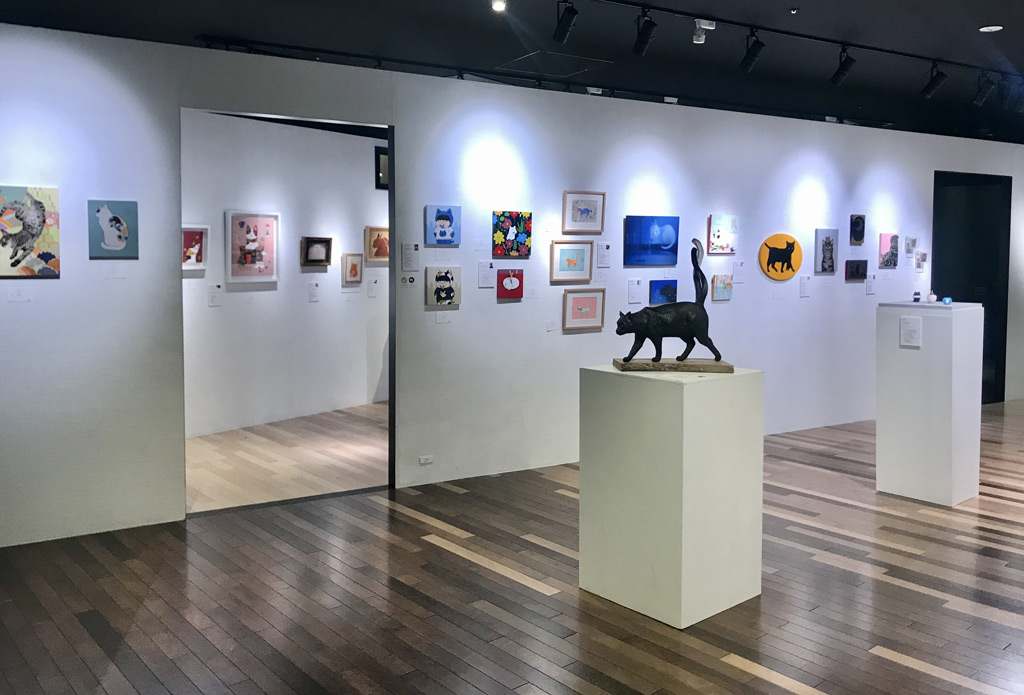











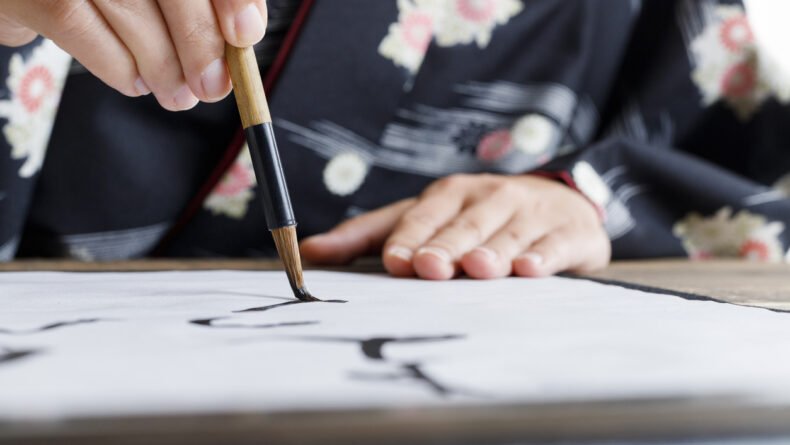

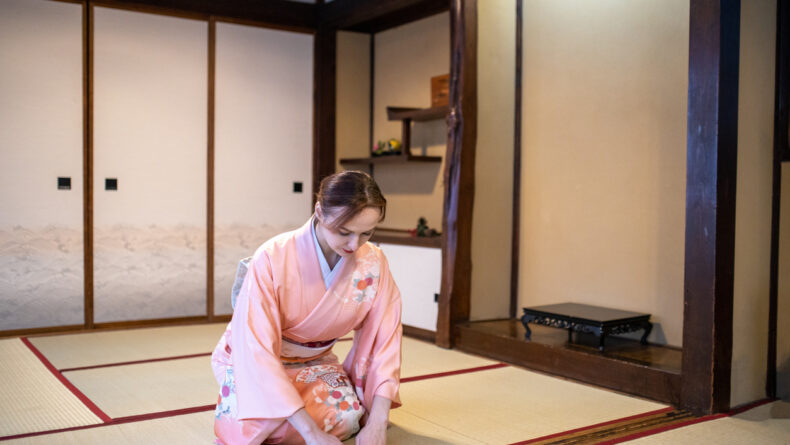

Leave a Reply